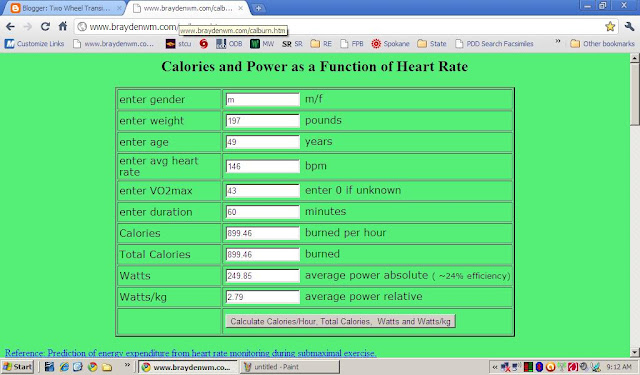In our last installment of Trainer Magic, I discussed the benefits of adding trainer workouts to your overall winter fitness regimen. Today we will look at how to gauge individual workouts and trends in your level of fitness. Riding on bicycle trainers will provide resistance to moving the rear wheel and it takes power (Watts) from you through the pedals and drive train to keep it moving.
The easiest way to measure Watts is with a special power meter designed for bicycles. Not everyone has a power meter or bike computer equipped to measure these indicators of performance. The thought of purchasing this type of equipment is not appealing after investing somewhere around $350 for a quality trainer.
The easiest way to measure Watts is with a special power meter designed for bicycles. Not everyone has a power meter or bike computer equipped to measure these indicators of performance. The thought of purchasing this type of equipment is not appealing after investing somewhere around $350 for a quality trainer.
 Even without a power meter you can estimate wattage from workout to workout as long as you use the same bike and trainer each time. Contrary to what many Watt-heads espouse, you do not need to know your exact Watt output in real time to plan and evaluate your workouts. An estimate works just fine for most cyclists' needs.
Even without a power meter you can estimate wattage from workout to workout as long as you use the same bike and trainer each time. Contrary to what many Watt-heads espouse, you do not need to know your exact Watt output in real time to plan and evaluate your workouts. An estimate works just fine for most cyclists' needs.As you can see from the chart to the right, this fluid resistance trainer provides increased resistance as speed increases - just like riding outside. So the faster you go, the more Watts (power) are required to spin the rear wheel with the pedals. For example, to reach and maintain 20 mph will require approximately 250 watts regardless of age, weight, gender or fitness level. A $35 bicycle computer that uses the rear wheel to calculate speed (since the front wheel is stationary when using a trainer) will give you average miles per hour and riding time. That information with the above chart gives you a pretty good approximation of the wattage output during a training session over a given duration. What speed does not tell you relates to what your body is doing to get to that point. Just riding at 20 mph for an hour each session does not give you feedback about your fitness level.
Another way to get this information is to monitor your average heart rate during a session and use an online calculator to estimate wattage. A heart rate monitor uses a strap to pick-up the electrical signals every time your heart beats and sends the information to a digital read-out and is a very good indicator of how hard you are working. The better your conditioning, the LOWER your hear rate will be for a given wattage or average speed. If you just want to keep it simple, track your average heart rate at an average speed for an hour. As your fitness level improves, you heart will beat more slowly for a given level of exertion, or average speed in this case. This means that over time you will have to exert more power to make your heart beat as fast as it did at the same indicated speed in the past. In short, you can track your progress by how fast you have to go to hit a particular heart rate over time.
There is an entire science devoted to using different percentages of your maximum heart rate to achieve levels of fitness - all of which is beyond the scope of this blog.
With this information you can plug in your sex, age, weight, minutes of exercise, average heart rate and presto, it estimates your average Watts and calories burned. I use the following online application and feel it comes pretty close for my needs - http://www.braydenwm.com/calburn.htm
You will note that my results from a 1 hour session at an average speed of 20 mph on a Kinetic Road Machine was 249.85 Watts - which correlates very closely with the 250 Watts predicted by the above chart.There is an entire science devoted to using different percentages of your maximum heart rate to achieve levels of fitness - all of which is beyond the scope of this blog.
With this information you can plug in your sex, age, weight, minutes of exercise, average heart rate and presto, it estimates your average Watts and calories burned. I use the following online application and feel it comes pretty close for my needs - http://www.braydenwm.com/calburn.htm
You can decide for yourself whether the science and assumptions for the model are sound, but again, as long as you use the same equipment each time, the model will allow you to see trends in your performance.
Hopefully this provides some tools to help you get the most out of a bicycle trainer and give you a training base when you hit the road this spring. Feel free to stop buy Two Wheel Transit to discuss your specific needs or look at trainers in person. See you on the road!

No comments:
Post a Comment